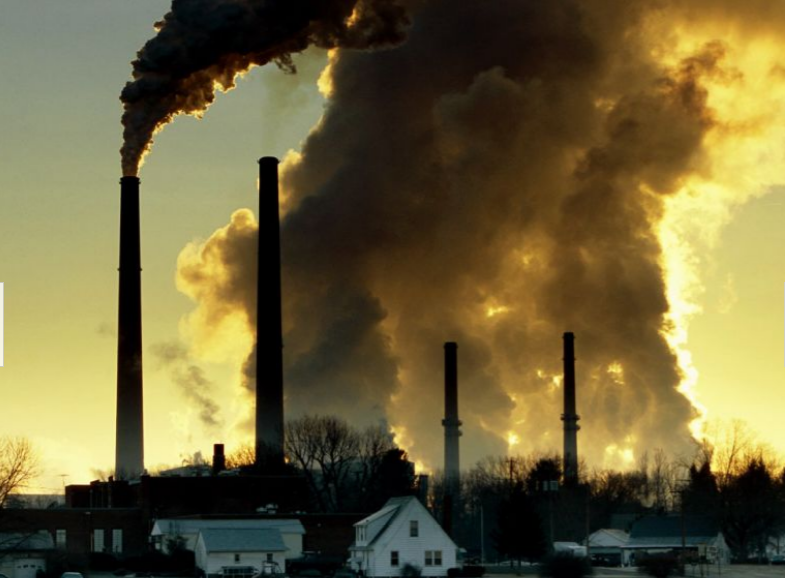
Global warming describes the current rise in the average temperature of Earth’s air and oceans. Global warming is often described as the most recent example of climate change. Earth’s climate has changed many times. Our planet has gone through multiple ice ages, in which ice sheets and glaciers covered large portions of the Earth. It has also gone through warm periods when temperatures were higher than they are today.
Past changes in Earth’s temperature happened very slowly, over hundreds of thousands of years. However, the recent warming trend is happening much faster than it ever has. Natural cycles of warming and cooling are not enough to explain the amount of warming we have experienced in such a short time—only human activities can account for it. Scientists worry that the climate is changing faster than some living things can adapt to it.
The Greenhouse Effect
Human activities contribute to global warming by increasing the greenhouse effect. The greenhouse effect happens when certain gases—known as greenhouse gases—collect in Earth’s atmosphere. These gases, which occur naturally in the atmosphere, include carbon dioxide, methane, nitrogen oxide, and fluorinated gases sometimes known as chlorofluorocarbons (CFCs).
Greenhouse gases let the sun’s light shine onto the Earth’s surface, but they trap the heat that reflects back up into the atmosphere. In this way, they act like the insulating glass walls of a greenhouse. The greenhouse effect keeps Earth’s climate comfortable. Without it, surface temperatures would be cooler by about 33 degrees Celsius (60 degrees Fahrenheit), and many life forms would freeze.
Since the Industrial Revolution in the late 1700s and early 1800s, people have been releasing large quantities of greenhouse gases into the atmosphere. That amount has skyrocketed in the past century. Greenhouse gas emissions increased 70 percent between 1970 and 2004. Emissions of carbon dioxide, the most important greenhouse gas, rose by about 80 percent during that time. The amount of carbon dioxide in the atmosphere today far exceeds the natural range seen over the last 650,000 years.
Most of the carbon dioxide that people put into the atmosphere comes from burning fossil fuels such as oil, coal, and natural gas. Cars, trucks, trains, and planes all burn fossil fuels. Many electric power plants also burn fossil fuels.
Another way people release carbon dioxide into the atmosphere is by cutting down forests. This happens for two reasons. Decaying plant material, including trees, releases tons of carbon dioxide into the atmosphere. Living trees absorb carbon dioxide. By diminishing the number of trees to absorb carbon dioxide, the gas remains in the atmosphere.
Most methane in the atmosphere comes from livestock farming, landfills, and fossil fuel production such as coal mining and natural gas processing. Nitrous oxide comes from agricultural technology and fossil fuel burning.
Fluorinated gases include chlorofluorocarbons, hydrochlorofluorocarbons, and hydrofluorocarbons. These greenhouse gases are used in aerosol cans and refrigeration.
All of these human activities add greenhouse gases to the atmosphere, trapping more heat than usual and contributing to global warming.
Effects of Global Warming
Even slight rises in average global temperatures can have huge effects. Perhaps the biggest, most obvious effect is that glaciers and ice caps melt faster than usual. The meltwater drains into the oceans, causing sea levels to rise and oceans to become less salty.
Ice sheets and glaciers advance and retreat naturally. As Earth’s temperature has changed, the ice sheets have grown and shrunk, and sea levels have fallen and risen. Ancient corals found on land in Florida, Bermuda, and the Bahamas show that the sea level must have been five to six meters (16-20 feet) higher 130,000 years ago than it is today. Earth doesn’t need to become oven-hot to melt the glaciers. Northern summers were just three to five degrees Celsius (five to nine degrees Fahrenheit) warmer during the time of those ancient fossils than they are today.
What We Can Do
Reducing our greenhouse gas emissions is a critical step in slowing the global warming trend. Many governments around the world are working toward this goal.
There are several ways that governments, industries, and individuals can reduce greenhouse gases. We can improve energy efficiency in homes and businesses. We can improve the fuel efficiency of cars and other vehicles. We can also support development of alternative energy sources, such as solar power and biofuels, that don’t involve burning fossil fuels.
Some scientists are working to capture carbon dioxide and store it underground, rather than let it go into the atmosphere. This process is called carbon sequestration. Trees and other plants absorb carbon dioxide as they grow. Protecting existing forests and planting new ones can help balance greenhouse gases in the atmosphere.
Changes in farming practices could also reduce greenhouse gas emissions. For example, farms use large amounts of nitrogen-based fertilizers, which increase nitrogen oxide emissions from the soil. Reducing the use of these fertilizers would reduce the amount of this greenhouse gas in the atmosphere.
The way farmers handle animal manure can also have an effect on global warming. When manure is stored as liquid or slurry in ponds or tanks, it releases methane. When it dries as a solid, however, it does not.
Resources : article from National Geographic: Greenhouse Effect https://education.nationalgeographic.org/resource/greenhouse-effect
Tarikh Input: 17/11/2022 | Kemaskini: 21/11/2022 | aslamiah
PERKONGSIAN MEDIA

























